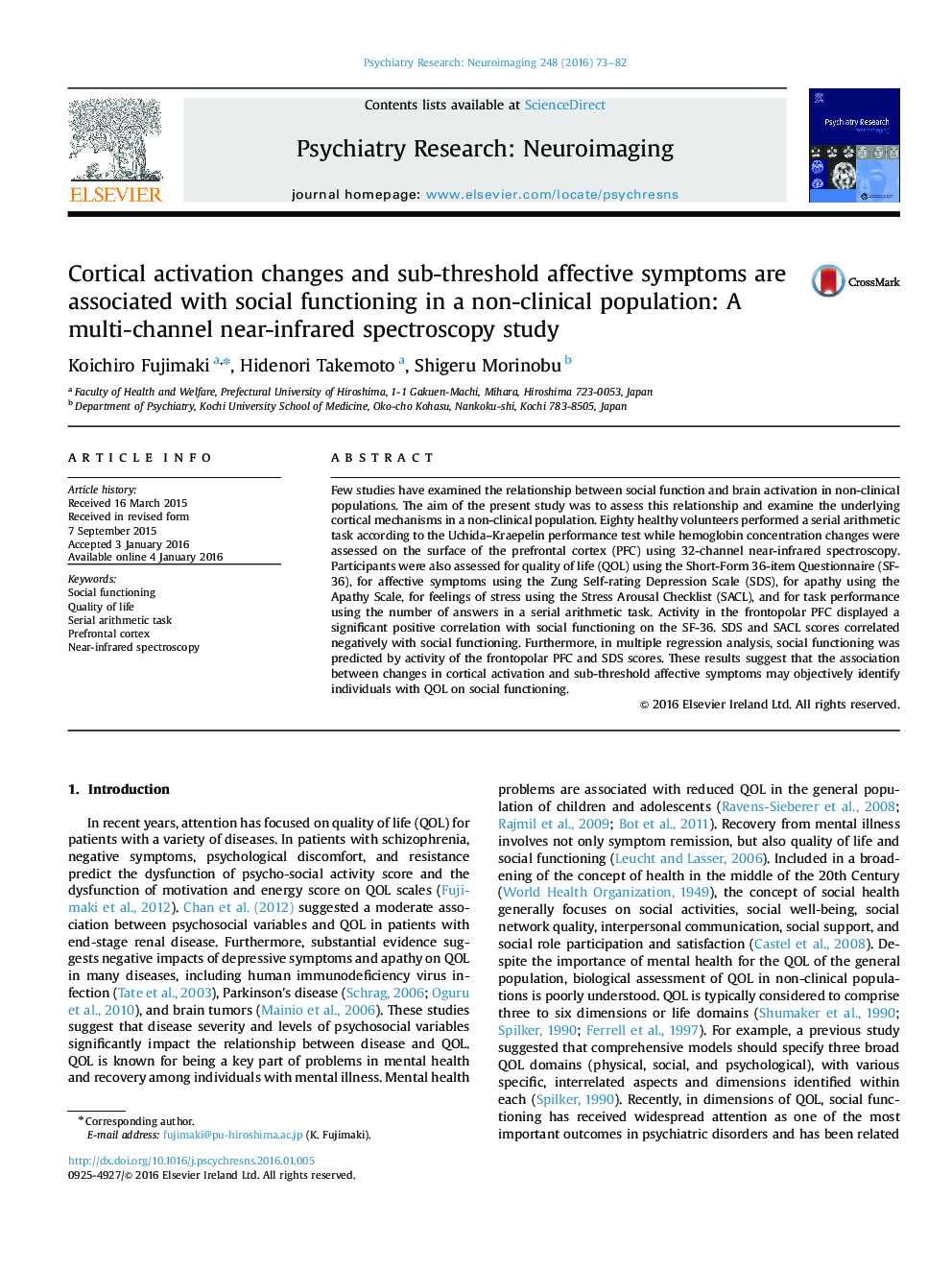| Article ID | Journal | Published Year | Pages | File Type |
|---|---|---|---|---|
| 6817236 | Psychiatry Research: Neuroimaging | 2016 | 10 Pages |
Abstract
Few studies have examined the relationship between social function and brain activation in non-clinical populations. The aim of the present study was to assess this relationship and examine the underlying cortical mechanisms in a non-clinical population. Eighty healthy volunteers performed a serial arithmetic task according to the Uchida-Kraepelin performance test while hemoglobin concentration changes were assessed on the surface of the prefrontal cortex (PFC) using 32-channel near-infrared spectroscopy. Participants were also assessed for quality of life (QOL) using the Short-Form 36-item Questionnaire (SF-36), for affective symptoms using the Zung Self-rating Depression Scale (SDS), for apathy using the Apathy Scale, for feelings of stress using the Stress Arousal Checklist (SACL), and for task performance using the number of answers in a serial arithmetic task. Activity in the frontopolar PFC displayed a significant positive correlation with social functioning on the SF-36. SDS and SACL scores correlated negatively with social functioning. Furthermore, in multiple regression analysis, social functioning was predicted by activity of the frontopolar PFC and SDS scores. These results suggest that the association between changes in cortical activation and sub-threshold affective symptoms may objectively identify individuals with QOL on social functioning.
Related Topics
Life Sciences
Neuroscience
Biological Psychiatry
Authors
Koichiro Fujimaki, Hidenori Takemoto, Shigeru Morinobu,
